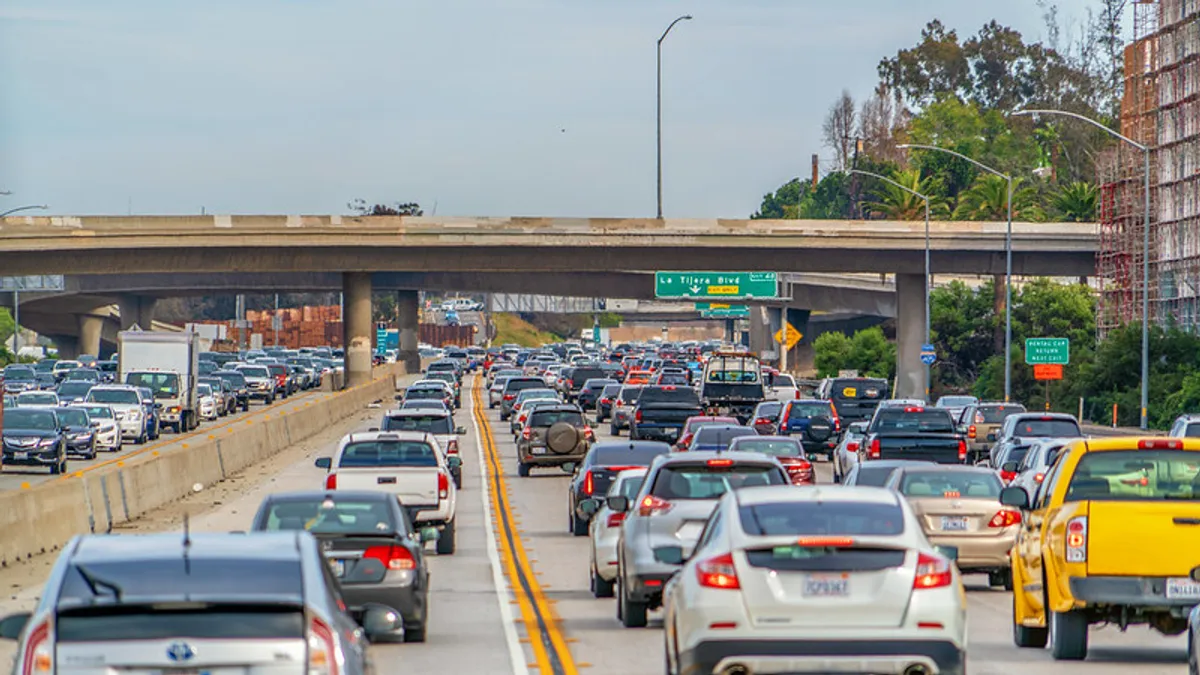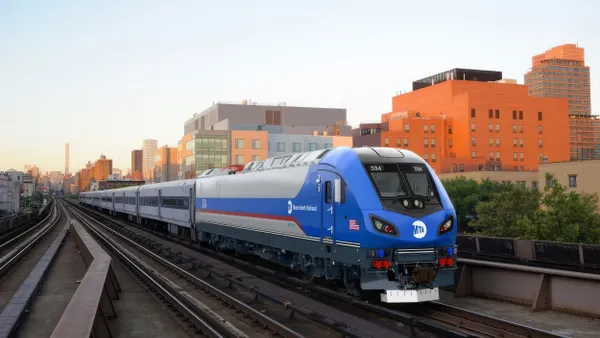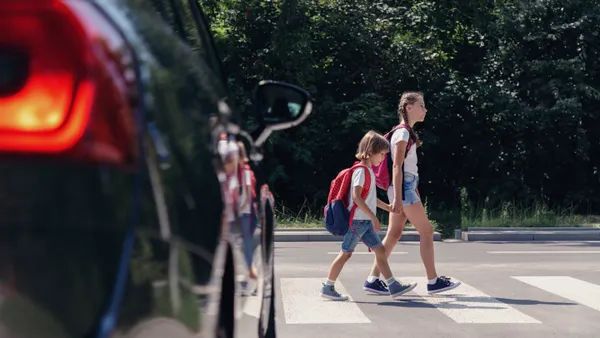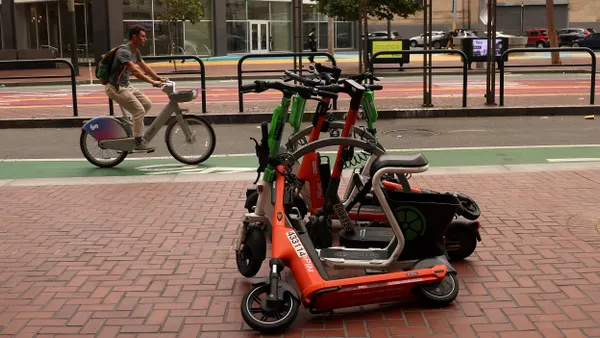Dive Brief:
- If cities can maintain even a small fraction of the 50% or more reduction in vehicle miles traveled (VMT) seen in most major metro-areas during the coronavirus pandemic — with cities like Los Angeles, Denver, and Atlanta seeing a more than 70% reduction in VMT — the climate impacts could be enormous, according to a new StreetLight Data analysis.
- A 10% reduction in VMT could mean a dramatic improvement in a city's climate, according to StreetLight Data and its U.S. Transportation Climate Impact Index of the nation's 100 most populous metro areas. If Los Angeles, for example, reduced its VMT by 10%, the city would move from No. 34 in the rankings to No. 17, while Denver would move from No. 59 to No. 35.
- There are many ways to reduce VMT by 10%, including a partially remote workforce, closing certain streets to cars or prioritizing VMT impact as a way to evaluate new construction projects. And while VMT reductions of 70% or more are "unthinkable" as states and cities start to reopen, a 10% reduction is "both realistic and heavily impactful," Martin Morzynski, VP of Marketing at the company, told Smart Cities Dive.
Dive Insight:
Climate experts have been heartened by the effect of social distancing on greenhouse gas (GHG) emissions. The International Energy Agency (IEA) predicts the impacts of the coronavirus could contribute to a near 8% drop in global GHG emissions in 2020, with global energy demand expected to drop 6%.
Single-occupancy vehicles are one such contributor to city emissions. The vehicles create massive gridlocks and have caused local leaders to search for alternatives by emphasizing bicycling, pedestrian options and public transit. The StreetLight Data analysis, which shows how each city's climate can improve with a reduction in VMT, could be key to help drive new conversations and policy decisions, Morzynski said.
"There is a window of opportunity here to really impact how cities think about climate and how fast they move," he said. "COVID-19 created a lot of negative impacts on society: illness, death and economic impact and so forth. But the reduction in driving is really a positive that is having a massive impact on climate."
To accompany the data, StreetLight released an online calculator to help planners and local leaders see how certain VMT reductions impact the 100 top metro areas. Morzynski said that is a bid to "simplify the discussion," and help "incentivize cities to think about tangible things they can do to extend the positive impact of COVID-19 and think hard about things they can do to keep people out of their cars." If the impact of policy decisions and the resulting VMT cuts are measurable, he said, it can be an easier sell to get residents to change transportation habits.
Concerns remain, however, around whether cities will see a renewed interest in driving as transit agencies work to rebuild trust with riders. Morzynski said there can be any number of policy levers to pull to reduce VMT, and while cars often dominate city transportation, this could be a chance for cities to think differently.
"We found that for many cities, because they're so reliant on cars, they can think about biking and all these other things, but the reality is it's really about getting people out of their cars more often, and the question becomes how to do it," Morzynski said. "It may very well be biking, or it may be keeping people at home one day a week."
To keep up with all of our coverage on how the new coronavirus is impacting U.S. cities, visit our daily tracker.











